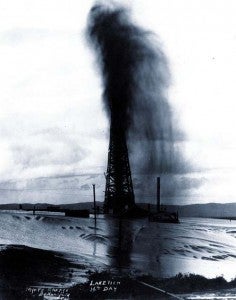The Environmental Protection Agency (EPA) is in the process of updating national safeguards to better protect Americans from the health impacts of natural gas and oil emissions. The standards address the emissions discharged during gas and oil drilling and development practices, known in the industry as ‘upstream’ activities.
Residents around the growing number of drilling, processing and transmission sites will be relieved to hear this because while industry activity has increased dramatically in the U.S., the Clean Air Act standards that regulate the related air pollution are outdated. Current standards are limited and fail to adequately protect public health.
These industrial activities discharge a host of air pollutants. Drilling rigs, wells and equipment emit hazardous air pollutants such as benzene, a known human carcinogen.
A number of other airborne contaminants contribute to ground-level ozone or “smog” pollution, elevated levels of which can lead to:
- decreased lung function, particularly in children who are active outdoors;
- respiratory-related hospital admissions and emergency room visits among both children and adults; and
- lung inflammation, possible long-term damage to the lungs and premature mortality.
Upstream drilling activities were the single largest source of ozone precursor pollutants in Colorado in 2008. The Texas Commission on Environmental Quality reports that storage tanks used in the exploration and production of natural gas in Texas are the largest source of volatile organic compounds (VOCs) in the state. These contaminants contribute to smog and also are comprised of hazardous air pollutants. And according to a recent inventory, oxides of nitrogen and VOC emissions produced from gas production in the Barnett Shale are comparable to the combined emissions from all the cars and trucks in the Dallas Forth-Worth metro area.
Oil and natural gas activities also are the single largest source of U.S. methane emissions. Methane is both a potent greenhouse gas and a contributor to smog. In 2009, methane emitted from these activities was roughly equivalent to the carbon dioxide emissions from 60 coal-fired power plants.
The media is starting to cover the plights of individuals and families who are suffering from exposure to these pollutants. National Public Radio did a story on a family in Pennsylvania that had a number of health symptoms due to drilling. “First Pam, her husband and two grown kids started getting headaches, and then fatigue set in. They’ve also had dizziness, nausea and nosebleeds. I’ve had a sore throat so long that I don’t know what it would be to not have a sore throat,” Pam says. For a week last summer, Pennsylvania state officials monitored the air at the Judys’ house and the compressor station. They found…toxic chemicals they say almost surely came from the compressor station.”
It is vitally important that EPA strengthen national emission standards. Improved emission standards will help protect millions of Americans, urban and rural, who live in the vicinity of oil and gas air pollution discharges.
Rigorous federal guidelines will also foster industry innovation and emerging technologies, and increase profits by using available best practices to capture saleable gas that’s otherwise released into the atmosphere.
Updated safeguards are long overdue but there is no guarantee that they will be the strong standards that are essential to protect the public’s health. You can help ensure that they are.
We encourage everyone who wants to breathe cleaner air to let the EPA know you support strong and comprehensive standards for the natural gas and oil industry.
Please get involved by writing to the EPA in favor of updated protections. We also invite you to join us and share your thoughts with the EPA at the upcoming public hearings in: Pittsburgh, Sept. 27; Denver, Sept. 28; and Arlington, Texas on Sept. 29. If you can’t make the hearings, you can submit comments online, via fax or through the mail until Oct. 24. In your correspondence, please be sure to reference Docket Number EPA–HQ–OAR–2010–0505; FRL–9456–2.












